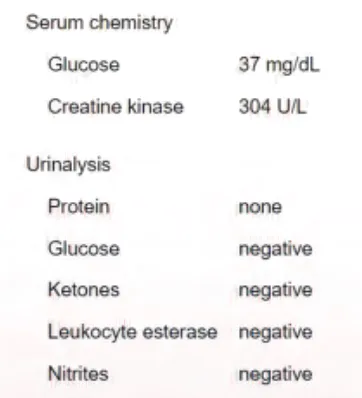Warning: Undefined variable $ext in /www/wwwroot/gkfeed.com/public_html/wp-content/plugins/show-hidecollapse-expand/bg_show_hide.php on line 281
Warning: Undefined variable $ext in /www/wwwroot/gkfeed.com/public_html/wp-content/plugins/show-hidecollapse-expand/bg_show_hide.php on line 281
Warning: Undefined variable $ext in /www/wwwroot/gkfeed.com/public_html/wp-content/plugins/show-hidecollapse-expand/bg_show_hide.php on line 281
7. A 42-year-old woman comes to the clinic for follow-up evaluation. She has a 15-year history of resting tremor, bradykinesia, and cogwheel rigidity consistent with Parkinson disease. One of her siblings recently started having similar symptoms. As part of a research study, genetic analysis is performed on the patient and the affected sibling. The results show a loss-of-function mutation that leads to accumulation of misfolded proteins. Which of the following biochemical processes is most likely defective in this patient?
A. Acetylation
B. Gamma-carboxylation
C. Glucuronidation
D. Phosphorylation
E. Ubiquitination
8. A 5-year-old girl is brought to the clinic due to several months of fatigue and difficulty walking. She ambulates normally at first but rapidly becomes weak and tired. The patient has not been ill recently and is usually happy and playful. She has a history of mild motor delays but is otherwise developmentally normal. Vital signs are within normal limits. Examination shows mildly decreased power in all extremities but no ataxia. Cardiac auscultation reveals a 1/6 systolic murmur and an S3 gallop. Laboratory results are as follows:

Muscle biopsy shows a very low carnitine content. This patient most likely has deficient synthesis of which of the following substances?
A. Acetoacetate ( 44 % )
B. Arachidonic acid (3%)
C. Glutathione (6%>)
D. Homocysteine (8%)
E. Lactate (8%)
F. Palmitate (27%)
9. A pharmaceutical researcher is studying a target protein involved in the signal transduction and cellular response to TSH. The protein is isolated and purified from thyroid follicular cells. Further analysis reveals that the protein contains multiple alpha-helical regions. Each of these regions is composed of approximately 20 amino acid residues consisting primarily of valine, alanine, and isoleucine. This particular region of the protein most likely performs which of the following functions?
A. Anchoring to the cell membrane
B. Binding to an extracellular ligand
C. Binding to intranuclear DNA
D. Interacting with metal ions in transporting proteins
E. Phosphorylating tyrosine residues
Warning: Undefined variable $in_same_cat in /www/wwwroot/gkfeed.com/public_html/wp-content/plugins/EXP.GKFEED.COM/function.php on line 27
Warning: Undefined variable $excluded_categories in /www/wwwroot/gkfeed.com/public_html/wp-content/plugins/EXP.GKFEED.COM/function.php on line 27